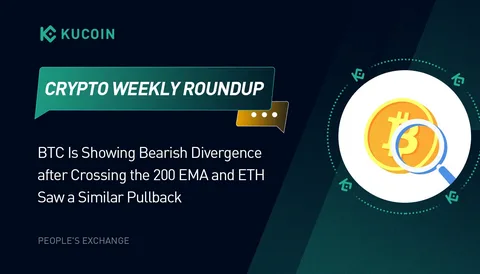Introduction
Cryptocurrency markets are well-known for their volatility, and even industry giants like Ethereum ($ETH) and Solana ($SOL) are no strangers to price swings. Recently, both cryptocurrencies have experienced minor dips, sparking discussions about the drivers behind these market fluctuations.
In this article, we’ll delve into the factors influencing these movements, exploring the broader implications for the crypto space. Whether you’re a seasoned investor or a curious observer, understanding the forces behind these changes is crucial for navigating the digital asset market.

The Nature of Market Fluctuations
Before diving into the specific drivers behind the recent dips in $ETH and $SOL, it’s essential to understand the dynamic nature of cryptocurrency markets. Unlike traditional financial systems, crypto markets operate 24/7, driven by a mix of global sentiment, technological innovation, and macroeconomic factors. Even a small shift in any of these areas can lead to market fluctuations, creating opportunities and risks for investors.
Ethereum ($ETH), the second-largest cryptocurrency by market capitalization, has been a cornerstone of decentralized finance (DeFi) and non-fungible tokens (NFTs). Solana ($SOL), on the other hand, has risen as a powerful contender in the blockchain space, offering high-speed transactions and low fees.
Despite their strengths, both assets recently encountered minor dips, leaving traders and analysts to speculate about the underlying causes. In the following sections, we’ll break down these factors into key categories, exploring their impact on the market.
1. Macro-Economic Factors: The Broader Context
Cryptocurrency markets do not exist in isolation; they are heavily influenced by the global economic climate. The recent minor dips in $ETH and $SOL can partly be attributed to broader macroeconomic trends that have created uncertainty across financial markets.
Inflation and Interest Rates
Rising inflation and central banks’ responses, such as increasing interest rates, often lead to risk-averse behavior among investors. Cryptocurrencies like $ETH and $SOL, considered high-risk assets, are typically among the first to be affected. In the current environment, fears of an economic slowdown have amplified this effect, contributing to market fluctuations.
Regulatory Pressures
Governments worldwide continue to refine their stances on cryptocurrency regulation. Announcements about potential restrictions or taxation policies frequently ripple through the market. Recent news regarding tighter crypto regulations in major economies may have sparked sell-offs, leading to minor dips in Ethereum and Solana prices.
Geopolitical Events
Geopolitical instability, such as conflicts or trade disputes, also weighs on market sentiment. As investors seek safer havens during uncertain times, the crypto market often reacts negatively, causing assets like $ETH and $SOL to experience temporary pullbacks.
2. Technological Developments and Network Updates
For blockchain platforms like Ethereum and Solana, technology plays a pivotal role in shaping their value. Recent developments—or the lack thereof—can directly impact market sentiment and trigger market fluctuations.
Ethereum’s Transition to Proof-of-Stake
Ethereum’s move to proof-of-stake (PoS) with the Merge was a landmark event in the crypto world. While this transition was largely successful, any delays or issues in subsequent upgrades could contribute to minor dips. Investors keep a close eye on Ethereum’s roadmap, and uncertainties regarding scalability improvements may lead to short-term sell-offs.
Solana’s Network Stability Challenges
Solana has faced criticism over its network outages, which have raised concerns about its reliability. Despite its impressive transaction speeds, these disruptions have eroded some investor confidence. Each outage or technical hiccup adds to the drivers behind $SOL’s market fluctuations, as traders reconsider the blockchain’s long-term viability.
Emergence of Competitors
The crypto ecosystem is highly competitive, with new projects constantly emerging. Rival platforms offering similar or improved functionalities can siphon attention and capital away from Ethereum and Solana, exerting downward pressure on their prices.
3. Investor Behavior and Market Sentiment
The psychology of investors is a significant driver of cryptocurrency prices. Market sentiment, influenced by social media trends, whale activity, and trading volumes, plays a crucial role in the short-term performance of assets like $ETH and $SOL.
FOMO and FUD
Fear of missing out (FOMO) and fear, uncertainty, and doubt (FUD) are common phenomena in the crypto market. Positive news can drive sudden price surges, while negative rumors or speculation can lead to minor dips. For example, speculative concerns about Ethereum’s scalability or Solana’s network reliability often amplify market reactions.
Whale Movements
Large holders of $ETH and $SOL, often referred to as whales, can significantly influence prices. When whales move large amounts of cryptocurrency, whether through sales or transfers, it often triggers reactions among retail investors, contributing to market fluctuations.
Volume and Liquidity
Low trading volumes can exacerbate price movements, as even modest sell-offs can create disproportionate effects. The recent dips in Ethereum and Solana prices may partly reflect lower liquidity during holiday seasons or other periods of reduced trading activity.
4. Market Cycles and Technical Indicators
Cryptocurrency markets operate in cycles, influenced by technical analysis and historical patterns. Recognizing these cycles and exploring technical indicators can provide insights into the recent minor dips experienced by $ETH and $SOL.
Bearish Patterns
Technical charts for Ethereum and Solana have recently shown bearish patterns, such as descending triangles or falling wedges. These patterns often signal potential declines, leading traders to preemptively sell, contributing to short-term market fluctuations.
Support and Resistance Levels
Both $ETH and $SOL have well-defined support and resistance levels that traders closely monitor. When prices approach these levels, market behavior can become more predictable. Breaking below key support levels often triggers panic selling, explaining the dips seen in recent weeks.
Correlation with Bitcoin
Ethereum and Solana, like most altcoins, exhibit a strong correlation with Bitcoin’s performance. When Bitcoin experiences downward pressure, it often drags the broader market along with it. This interconnectedness is another driver of the recent market fluctuations for $ETH and $SOL.
Conclusion: Navigating Market Volatility
The minor dips in $ETH and $SOL prices are a natural part of the cryptocurrency market’s inherent volatility. From macroeconomic trends to technological developments, and from investor psychology to technical analysis, multiple drivers contribute to these market fluctuations. By staying informed and understanding these underlying factors, traders and investors can make more strategic decisions.
As the crypto landscape continues to evolve, it’s essential to approach market movements with a balanced perspective. Both Ethereum and Solana remain foundational players in the blockchain space, with strong communities and ongoing innovation. Temporary dips are often opportunities for long-term growth, provided one has a clear understanding of the risks and rewards.
What do you think about the recent performance of $ETH and $SOL? Are these minor dips a cause for concern, or do they present a buying opportunity? Leave a comment below and share your thoughts—let’s explore this topic together!






